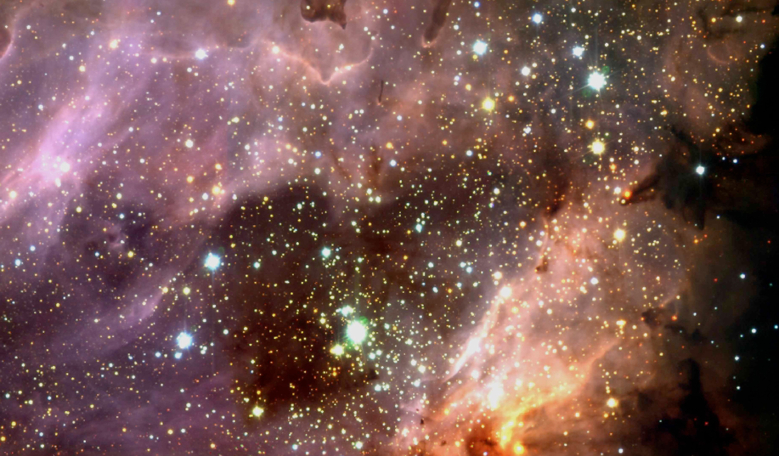Astronomers have for the first time observed the birth of a dark molecular cloud, a giant gaseous interstellar region that will eventually one day become the breeding ground for a new generation of stars.
Stars are predominantly made up of the most abundant element in the Universe; hydrogen. But before you start to form a star you need all of the atomic hydrogen that is drifting around in the interstellar medium (the space between the star systems in a galaxy) to accumulate somewhere and to start bonding together to form molecular hydrogen (H2).
While this might seem like a simple, straightforward process, this critical aspect of star formation is anything but. The frigid, harsh environment of space makes it incredibly difficult for the right reaction to occur, although it is now widely accepted that the process happens on the surface of dust grains floating around in the vast expanses of space.
When enough of these molecules eventually come together in a large gaseous region, it is given the sinister title of a dark molecular cloud because its chief component, molecular hydrogen, is either difficult or impossible to detect. Instead researchers often try to identify another molecule – carbon monoxide (CO) – to learn more about the processes going on in the cloud.
However, it is the formation of molecular hydrogen (H2) that is the critical factor because this goes hand in hand with how long it takes stars to form. Just how long it takes a star to go from being a clump of hydrogen molecules to something that resembles a tightly-packed glowing ball of energy is somewhat controversial and has led to many different theories being proposed.
Some say it takes around 10 million years, while others say one million years (on parsec scales) is enough. Therefore, if you have a good idea of how long it takes H2 to form, you will have a better understanding of dark cloud formation, which in turn will provide more information on star formation efficiency and the star formation rate.
Now, by using a novel observation method, an international team of astronomers have discovered a striking circle of atomic hydrogen in a rare, isolated dark cloud named B227 – the first time such a structure has been seen in a molecular cloud. And, after reconstructing the chemical state and the evolutionary history of the cloud, the team, whose lead author on the research paper is Pei Zuo from the Chinese Academy of Sciences in Beijing, have been able to measure how long it takes atomic hydrogen to form molecular hydrogen.
The answer is around 6 million years. This falls on the side of star formation theories that promote longer timescales for stars to get established and is consistent with the global Galactic star formation rate.
The research has yet to be peer reviewed by others in the field, but if accepted could not only help narrow-down the chemical evolution of potential star-forming clouds, but could also help constrain how galaxies evolve too.











